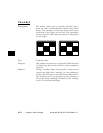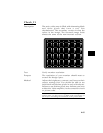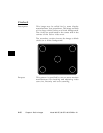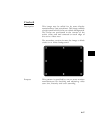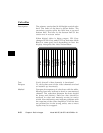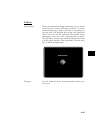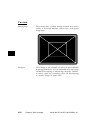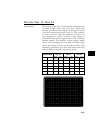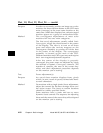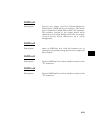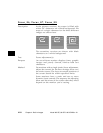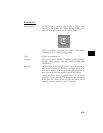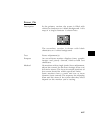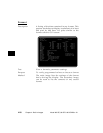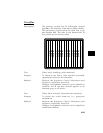
4-22 Chapter 4: Built-In Images
Model 801GC, 801GF & 801GX¥Rev. X1
Dot_10, Dot_12, Dot_24 — contd.
Purpose In order to accurately produce an image on a color
monitor, the three electron beams in the CRT must
meet (converge) at the exact same location at the
same time. Small dots displayed on a misconverged
monitor appear as a group of multicolored dots.
Method The convergence adjustments of most color
monitors fall into two main categories.
The first set of adjustments, usually called Static
Convergence, aligns the three beams in the center
of the display. The idea is to turn on all three
guns and adjust the various magnets on the
convergence assembly to produce all white dots
in the center of the display. The convergence
assembly is located on the neck of the CRT.
Different monitors and CRT types may each require
their own magnet-adjustment sequence.
After the center of the display is properly
converged, the outer areas are adjusted by using
the monitor’s Dynamic Convergence controls. The
number of controls, the area of the screen they
affect, and their adjustment procedure depends
on the monitor you’re testing.
Test Focus adjustment(s)
Purpose An out-of-focus monitor displays fuzzy pixels
which, in turn, result in poorly formed and hard-
to-read characters.
Method On monitors with a single (static) focus adjustment,
adjust the control for the best average focus over
the entire screen. The focus at certain locations
should be within specified limits.
Some monitors have a static and one or more
dynamic focus controls. The sequence for adjusting
them and the areas of the screen they affect depend
on the monitor you’re testing.



